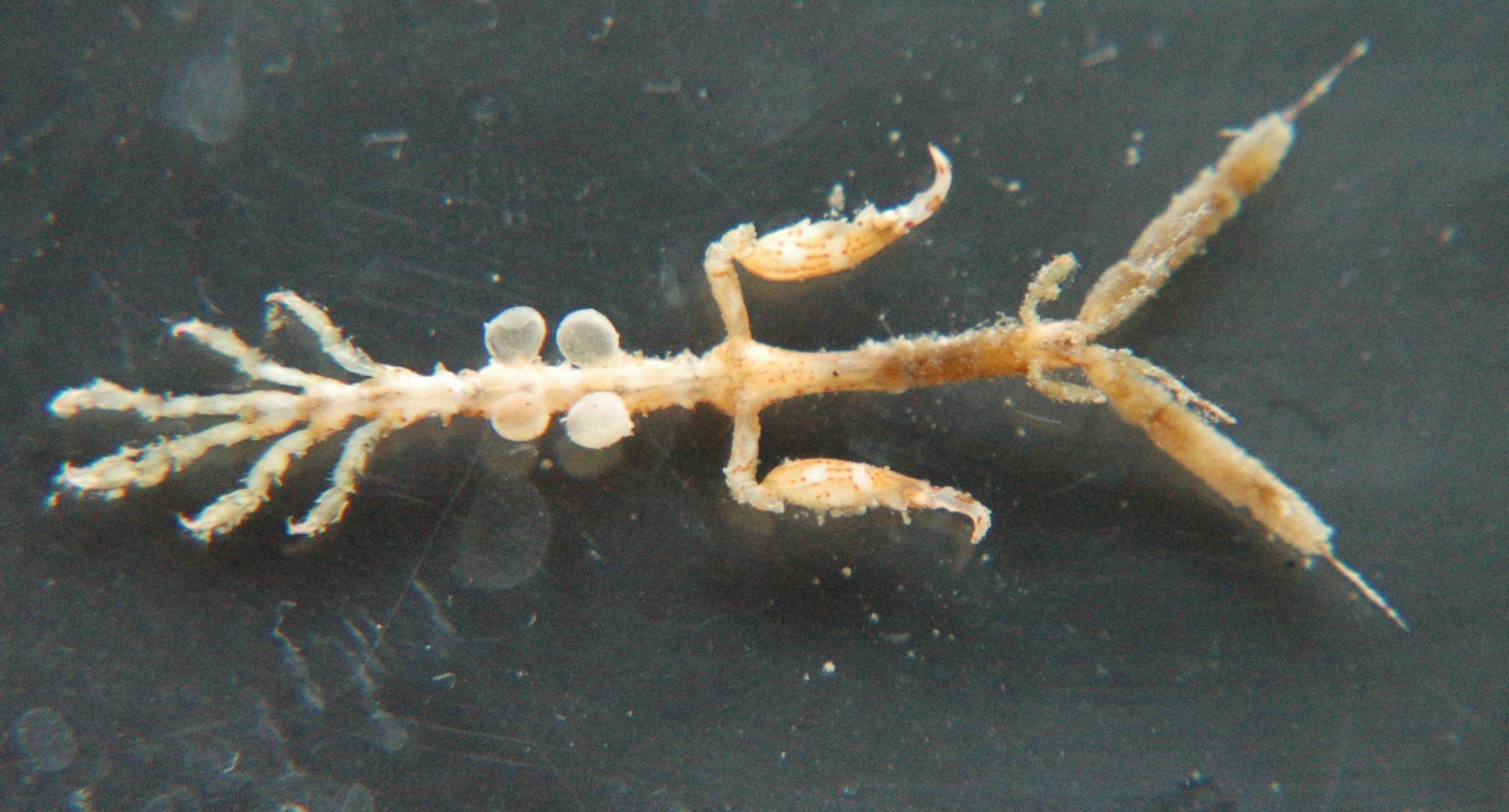Description: Family Caprellidae ("skeleton shrimp") are distinctive-looking. Their long, stick-like bodies are composed of a cephalon (head), pereon (thorax), and a tiny abdomen. The vast majority of the body is the pereon. Caprellids have two pairs of antennae, and the first pair is usually the longest (photo). The first two segments (pereonites) of the pereon have large legs (pereopods) called gnathopods (photo). The gnathopods are large, usually subchelate claws, and are used to capture prey and to grasp the substrate as they move around. Pereopods 3 and 4 are usually reduced or absent, but pereonites 3 & 4 (and 2 on some species) have pairs of leaf-like gills. Females also have a marsupium (pouch) on pereonites 3 & 4 in which they carry the eggs or young (photo). Pereonites 5-7 have a set of 3 smaller pereopod pairs at the posterior end of the body that are smaller than the gnathopods and are used to grasp the substrate (photo). The abdomen is tiny and attached to the dorsal end of pereonite 7 (photo). This species (Caprella kennerlyi) has two forward-projecting spines on the back of its cephalon (head) (photo) (photo). The articles of the peduncle of antenna 1 are much longer than wide (photo) (photo), and the flagellum of the first antenna is shorter than the peduncle (see photo above and below). On males, the peduncle of antenna 1 is stout and setose (photo) and the flagellum has less than 20 articles. The mandible of this species has a molar process but does not have a palp. Usually the cephalon is fused to the first segment (pereonite) of the pereon. The merus of gnathopod 2 has a sharp, spiny anteroventral projection or a stout, spinelike seta (photo). The propodus of gnathopod 2 is less than 2/3 as wide as long (photo), and the second pereonite does not have a ventral spine between the two gnathopods (photo). Pereonites 1 and 2 of males are more than twice as long as wide (photo). It has gills only on pereonites 3 and 4 (See photos above and below). Pereonites 3 and 4 also have several pairs of spines and have oostegites on mature females, but not even rudimentary legs on either sex. Pereopods 5-7 (the legs near the back) have a single grasping spine or tooth on their propodus (photo photo). Females have a rough texture, with spines on all segments. Often has pink spots and bands.
How to Distinguish from Similar Species: This is an unusually large skeleton shrimp species. Metacaprella anomala has the flagellum of antenna 1 longer than the peduncle and pereonites 1 and 2 of males are not more than twice as long as wide.
Geographical Range: All along the N American Pacific coast
Depth Range: Intertidal and subtidal
Habitat: Many different substrates and fouling communities (first described from a fouling community on a ship in Port Townsend). Often in Abietenaria hydroid colonies.
Biology/Natural
History: May be
especially well-camouflaged on Plumularia
lagenifera hydroids. The setae
on the antennae
are apparently used to scrape algae off the body. Filter
feeders
and detritus eaters such as this species scrape their body
clean.
Carnivorous predator and scavenger species allow algae to grow on them,
presumably to increase their camouflage.
| Return to: | |||
| Main Page | Alphabetic Index | Systematic Index | Glossary |
References:
Dichotomous Keys:Carlton, 2007
Kozloff, 1987, 1996 (as Metacaprella kennerlyi)
General References:
Johnson and Snook, 1955
Ricketts et al., 1985
Scientific Articles:
Caine, E.A., 1980. Ecology of two littoral species of caprellids (Crustacea) from Washington, USA. Marine Biology 56: pp 327-335
Jensen, M.P., 1969. The ecology and taxonomy of the Caprellidae (Order: Amphipoda; Suborder: Caprellidea) of the Coos Bay, Oregon, area. Ph.D. dissertation, Department of Entomology, University of Minnesota
Martin, D.M., 1977. A survey of the family
Caprellidae (Crustacea,
Amphipoda) from selected sites along the northern California
coast.
Bulletin of the Southern California Academy of Sciences 76: pp 146-167
Web sites:
General Notes and Observations: Locations, abundances, unusual behaviors:
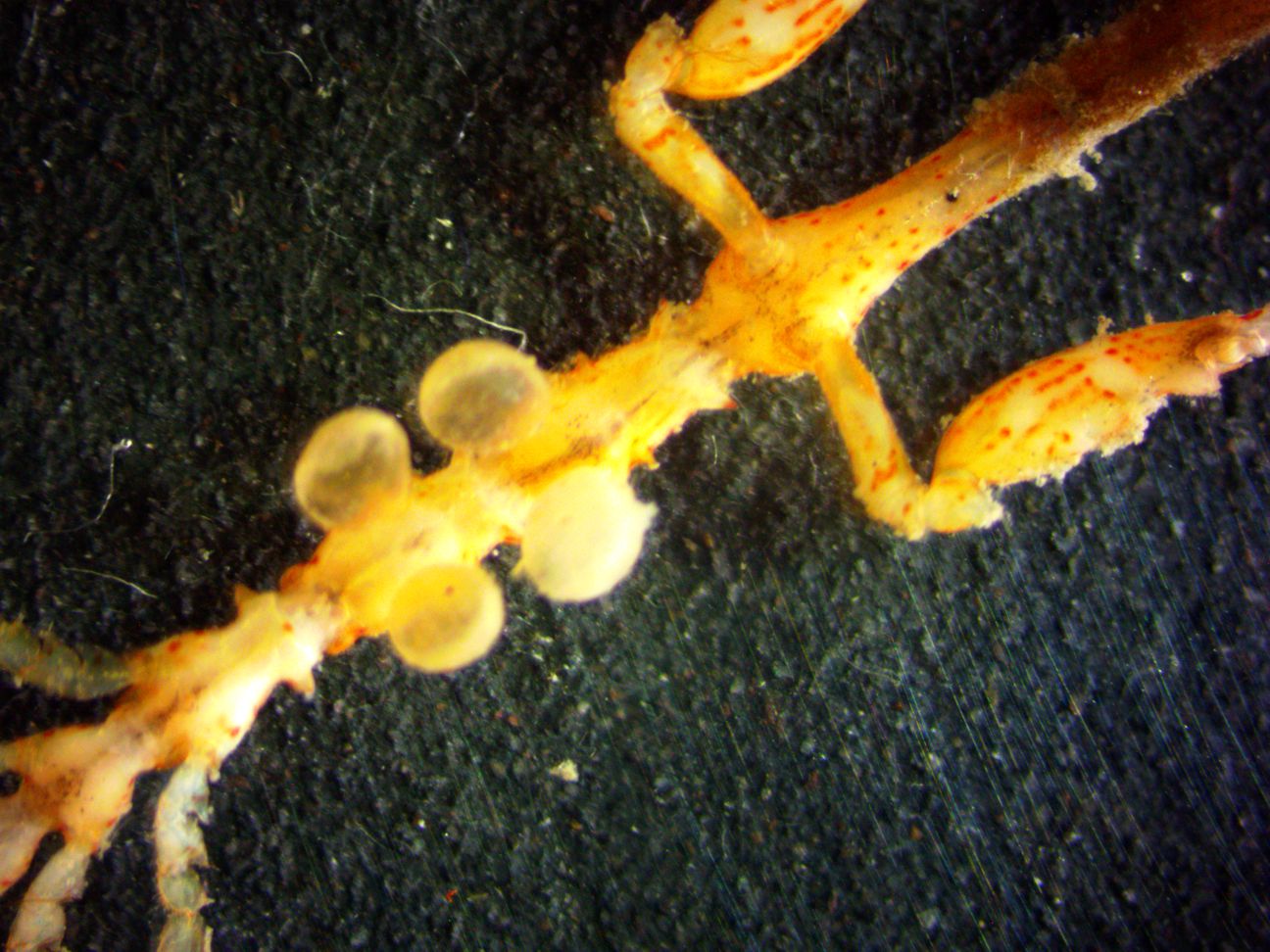
This ventral
view shows the gills but no legs on pereonites
4 and 5. On the second gnathopods,
the merus
has an anteroventral spine, the propodus
of the second gnathopod
is less than 2/3 as wide as long, and the ventral
region of the second pereonite
between the bases of the second gnathopods
is smooth instead of having a tubercle
or
spine.
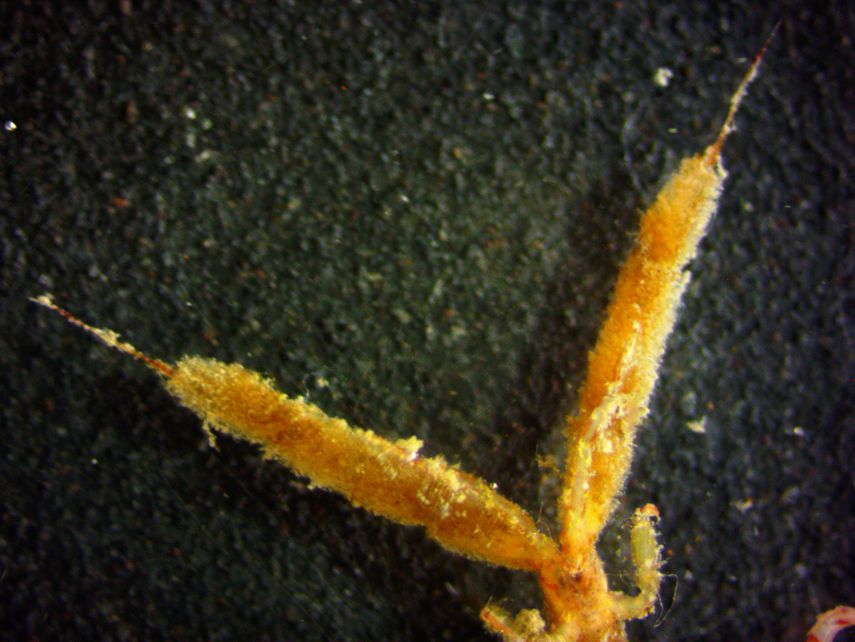
On males such as this one, the peduncles
of the first antennae
are robust with many setae,
and the antennal
flagellum
is shorter than the peduncle.
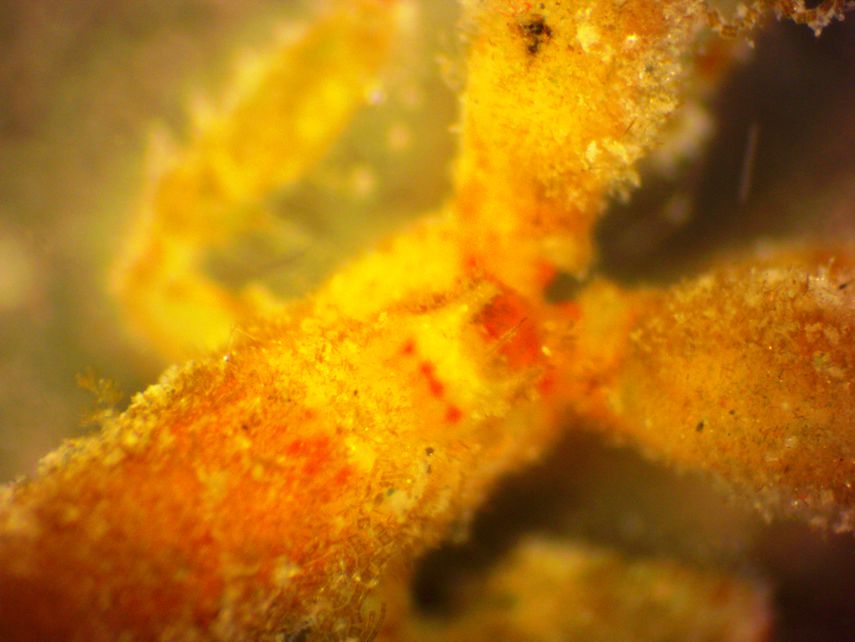
This dorsal
view of the head shows the forward-pointing head spines. The
middle
spine is lower than the others and may be a piece of debris.
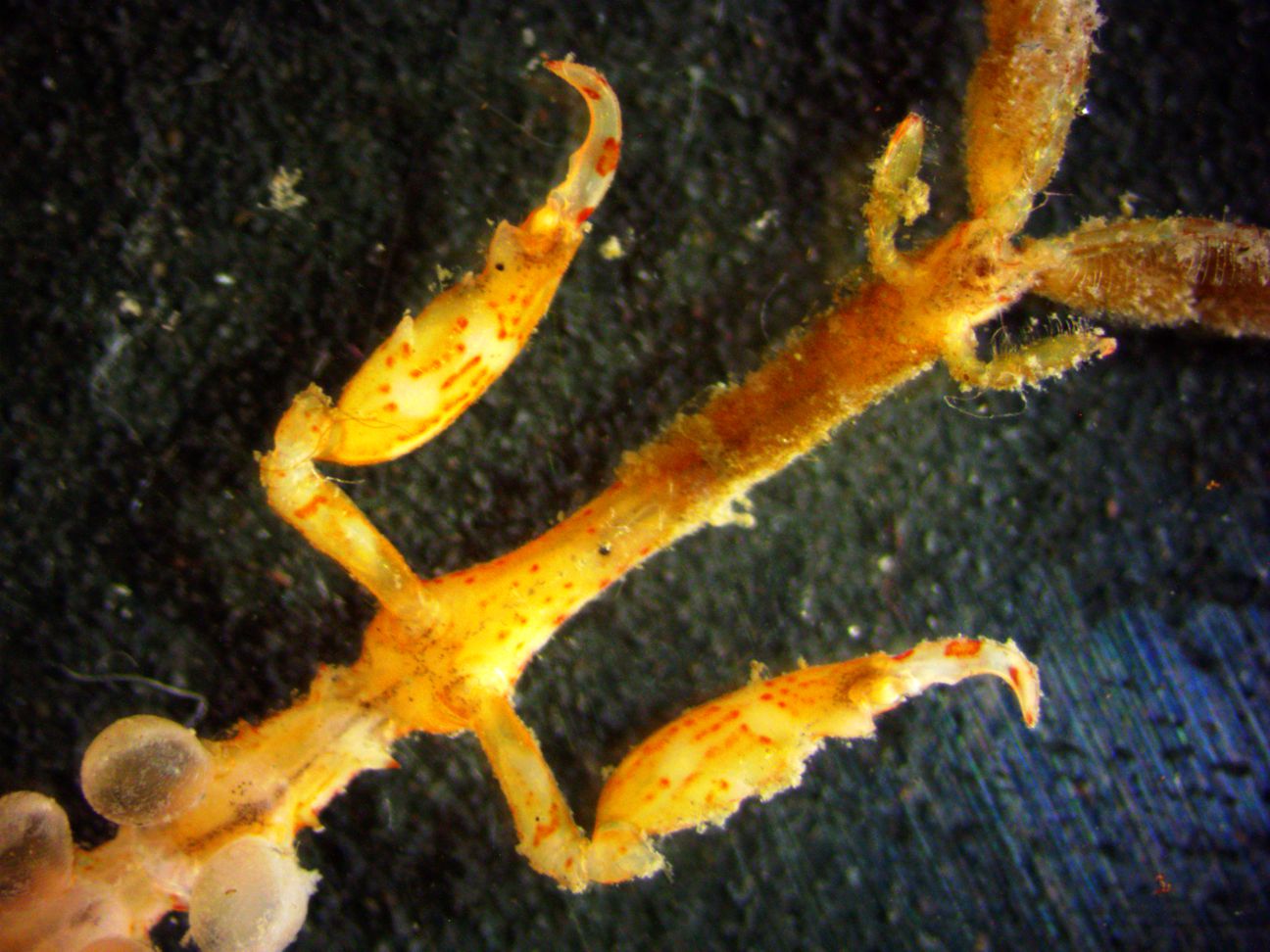
This ventral
view of the head gives a clear view of the mouth, antennae,
gnathopods
1 and 2, and pereonites
1-5.
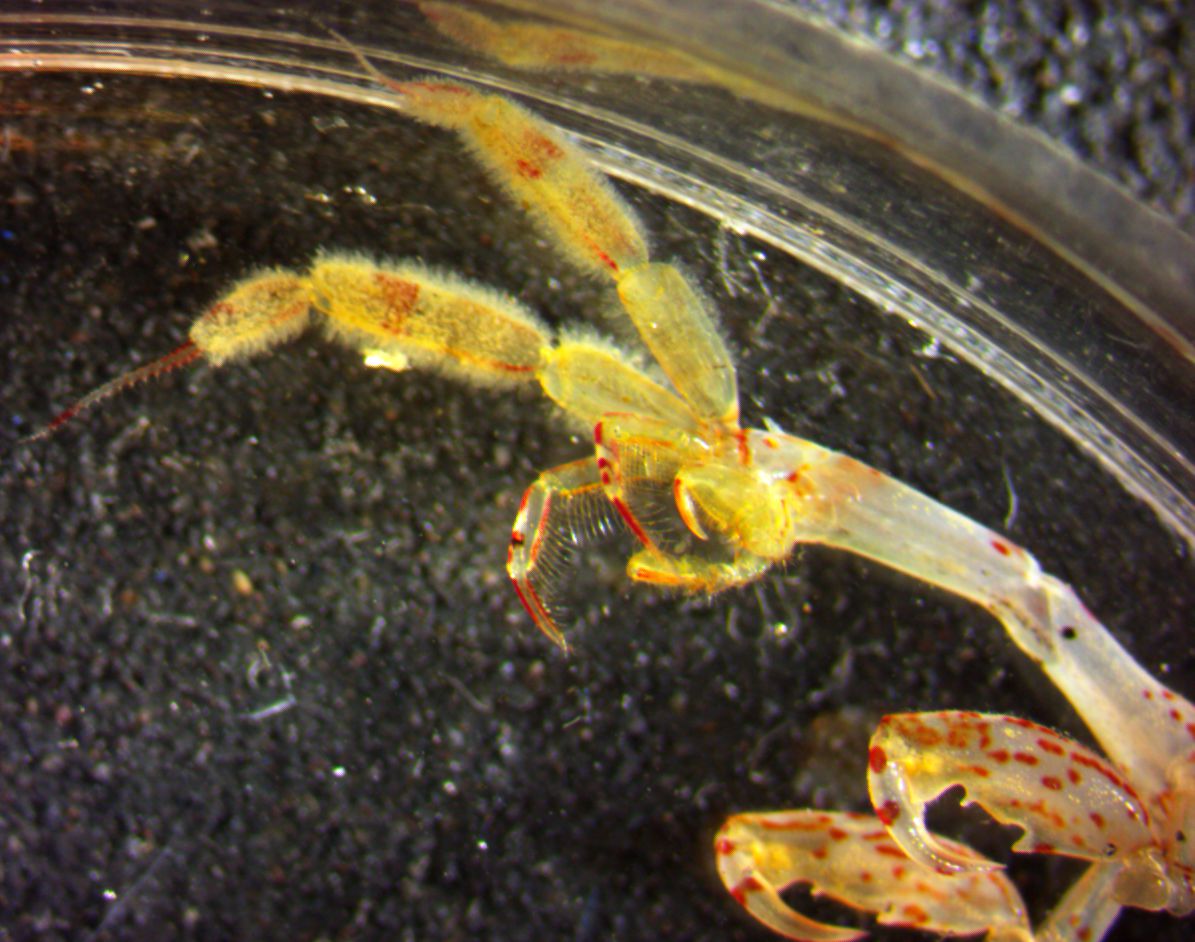
Head of a 3 cm-long individual male found on Padilla Bay eelgrass in
2018. Note the long peduncle
with elongated, setose
articles
and the small flagellae
on the first antennae, the much smaller 2nd antennae with the curled flagellum,
one of the head spines which is visible, and the first and 2nd gnathopods.
Pereonites
1 & 2 are more than twice as long as wide. Notice that gnathopod
2 (bottom right) has an anterior projection on the short merus,
and that the propodus
(base part of the claw) is quite long and less than 2/3 as wide as
long.
Photo by Dave Cowles, August 2018.
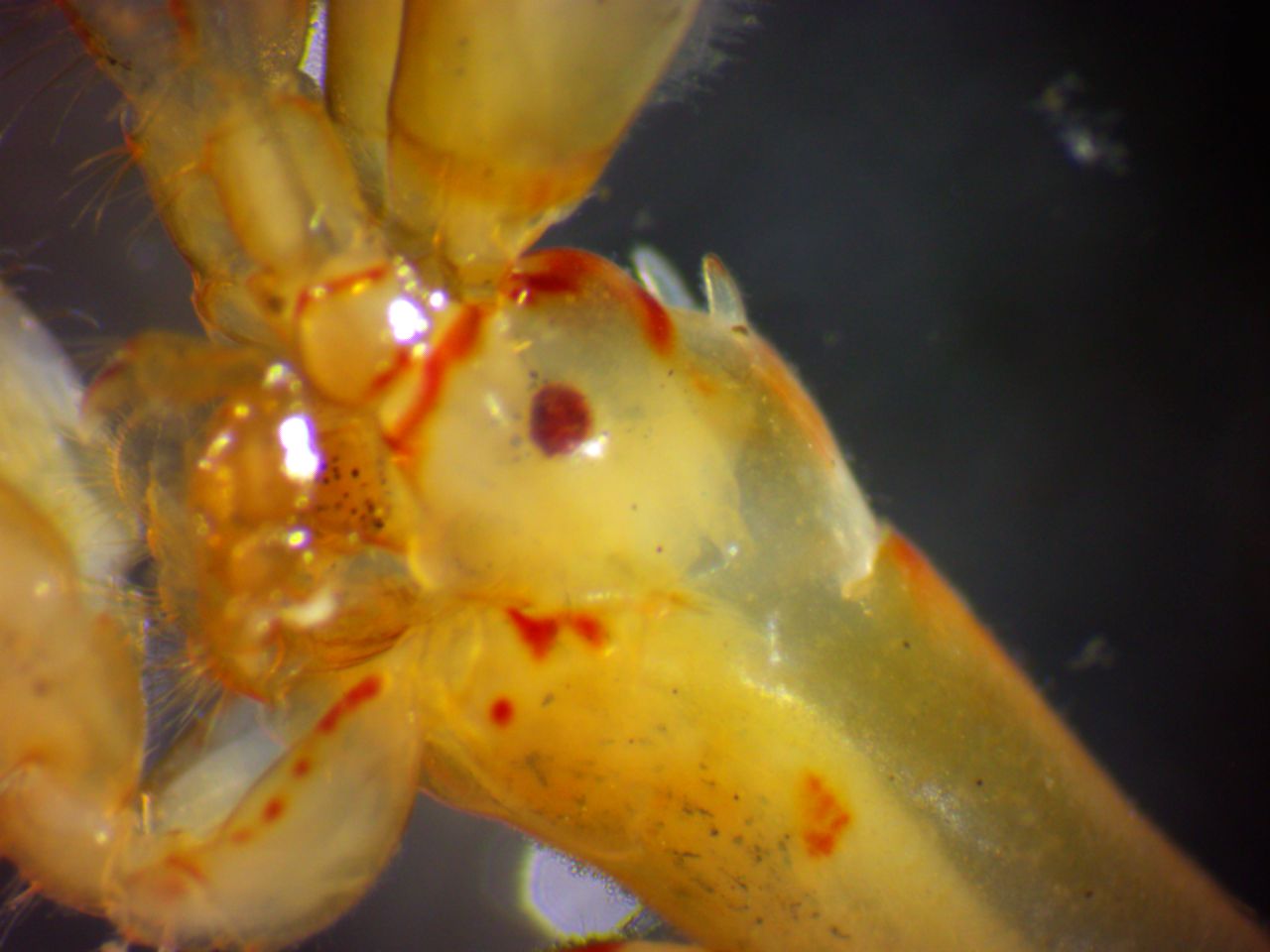
This closeup of the head shows the sessile
eye and the two head spines. Note also the fusing of the head with the
first pereonite.
On the lower left the first gnathopods
can be seen attached to the front of the first pereonite.
Above them are the mouth parts, and the bases of the two antennae are
above
that. Photo by Dave Cowles, August 2018.
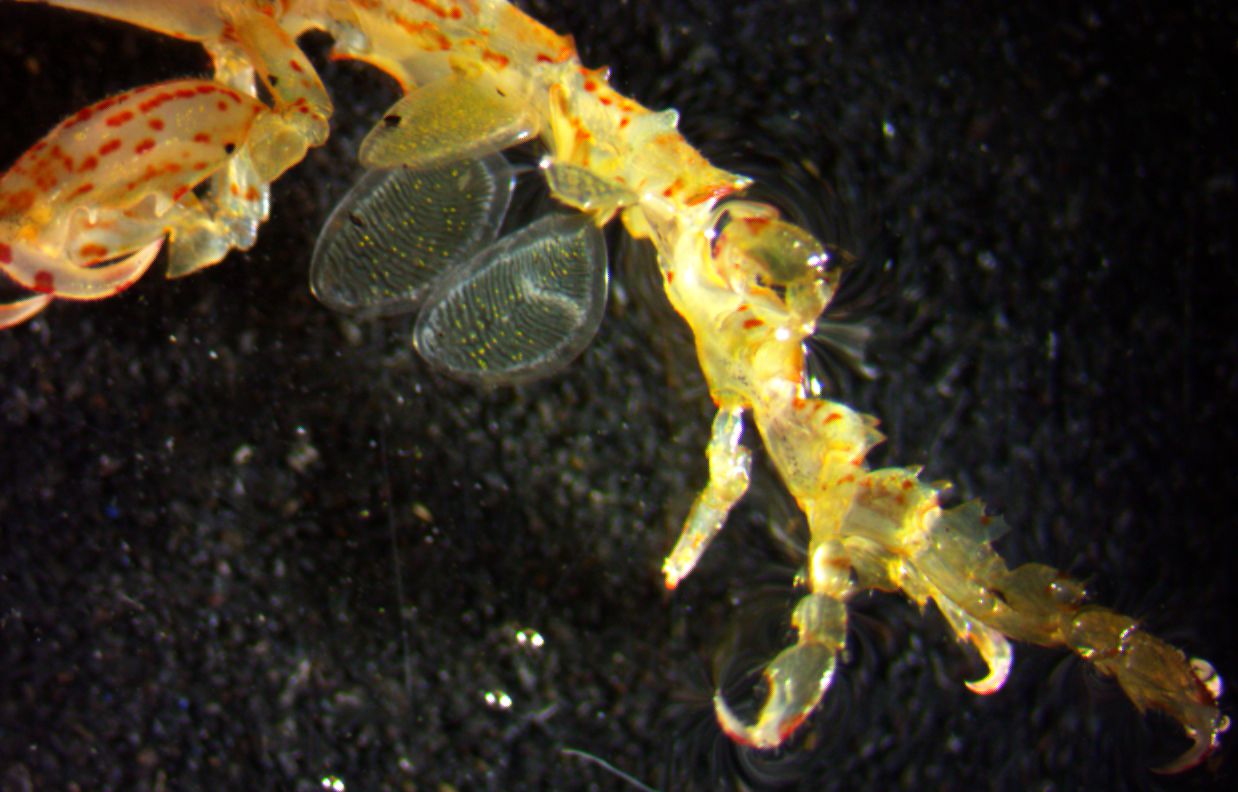
Note that this species has leaf-like gills
only on pereonites
3 & 4 (behind the 2nd gnathopod
but anterior to the grasping legs on pereonites
5-7), and no legs (pereopods)
on those 2 segments. Photo by Dave Cowles, August 2018
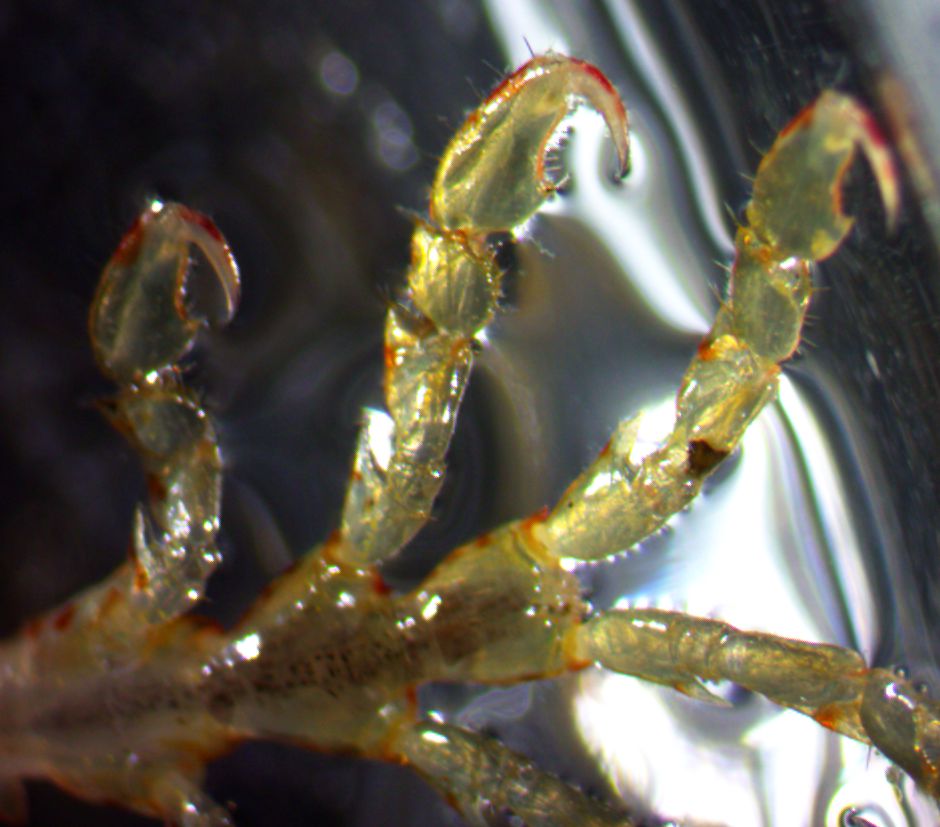
This close-up of pereopods
5-7 shows that the propodus
of these pereopods
has several setae
but only one basal spine. Note also the tiny, nubbin-like abdomen
on the dorsal base of pereonite
7. Photo by Dave Cowles, August 2018

This even closer view of one of the posterior grasping pereopods
(pereopod 5 or 6) clearly shows the single spine at the base of the propodus.
Photo by Dave Cowles, August 2018
Authors and Editors
of Page:
Dave Cowles (2014): Created original page
CSS coding for page developed by Jonathan Cowles (2007)
Salish Sea Invertebrates web site provided courtesy of Walla
Walla University
